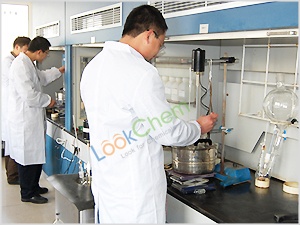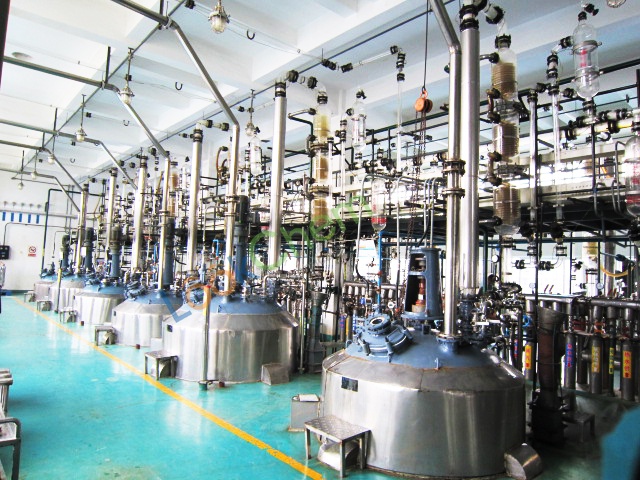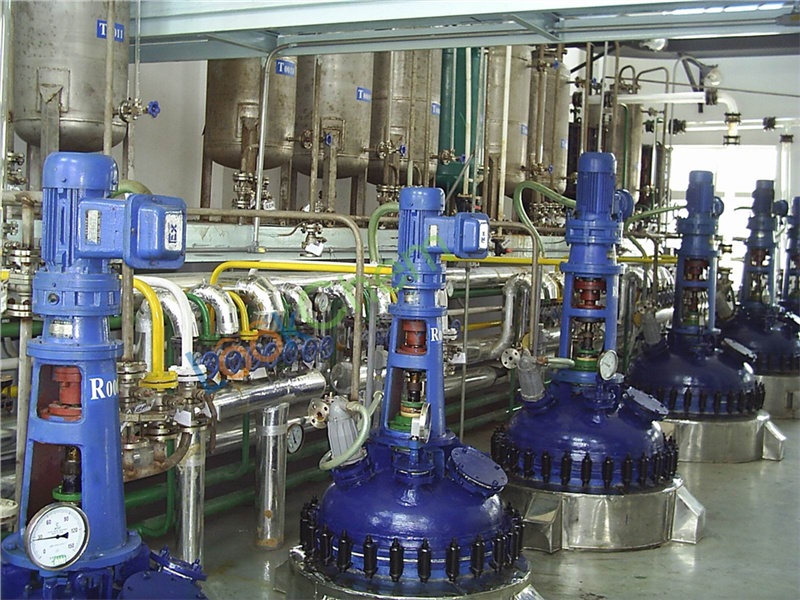pyrrole msds
- Product Details
- Company Profile
1 、Chemical Product
Product Name: Pyrrole
Catalog Codes: SLP2617
CAS#: 109-97-7
RTECS: UX9275000
TSCA: TSCA 8(b) inventory: Pyrrole
CI#: Not available.
Chemical Name: Not available.
Chemical Formula: C4H5N
Toxicological Data on Ingredients: Pyrrole: ORAL (LD50): Acute: 98 mg/kg [Mouse].
2 、Hazards Identification
Potential Acute Health Effects: Very hazardous in case of skin contact (irritant), of eye contact (irritant), of ingestion, of inhalation. Slightly hazardous in case of skin contact (permeator). Severe over-exposure can result in death. Inflammation of the eye is characterized by redness, watering, and itching. Skin inflammation is characterized by itching, scaling, reddening, or, occasionally, blistering.
Potential Chronic Health Effects: CARCINOGENIC EFFECTS: Not available. MUTAGENIC EFFECTS: Not available. TERATOGENIC EFFECTS: Not available. DEVELOPMENTAL TOXICITY: Not available. Repeated exposure to an highly toxic material may produce general deterioration of health by an accumulation in one or many human organ.
3 、First Aid Measures
Eye Contact: Check for and remove any contact lenses. Do not use an eye ointment. Seek medical attention.
Skin Contact: After contact with skin, wash immediately with plenty of water. Gently and thoroughly wash the contaminated skin with running water and non-abrasive soap. Be particularly careful to clean folds, crevices, creases and groin. Cover the irritated skin with an emollient. If irritation persists, seek medical attention. Wash contaminated clothing before reusing.
Serious Skin Contact: Wash with a disinfectant soap and cover the contaminated skin with an anti-bacterial cream. Seek immediate medical attention.
Inhalation: Allow the victim to rest in a well ventilated area. Seek immediate medical attention.
Serious Inhalation: Evacuate the victim to a safe area as soon as possible. Loosen tight clothing such as a collar, tie, belt or waistband. If breathing is difficult, administer oxygen. If the victim is not breathing, perform mouth-to-mouth resuscitation. Seek medical attention.
Ingestion: Do not induce vomiting. Examine the lips and mouth to ascertain whether the tissues are damaged, a possible indication that the toxic material was ingested; the absence of such signs, however, is not conclusive. Loosen tight clothing such as a collar, tie, belt or waistband. If the victim is not breathing, perform mouth-to-mouth resuscitation. Seek immediate medical attention.
Serious Ingestion: Not available.
4 、Fire and Explosion Data
Flammability of the Product: Flammable.
Auto-Ignition Temperature: Not available.
Flash Points: CLOSED CUP: 38.89°C (102°F).
Flammable Limits: Not available.
Products of Combustion: These products are carbon oxides (CO, CO2).
Fire Hazards in Presence of Various Substances: Not available.
Explosion Hazards in Presence of Various Substances:
Risks of explosion of the product in presence of mechanical impact: Not available. Risks of explosion of the product in resence of static.
Dscharge: Not available.
Fire Fighting Media and Instructions:
Flammable liquid. SMALL FIRE: Use DRY chemical powder. LARGE FIRE: Use alcohol foam, water spray or fog. Cool containing vessels with water jet in order to prevent pressure build-up, autoignition or explosion.
Special Remarks on Fire Hazards: Not available.
Special Remarks on Explosion Hazards: Not available.
5 、Accidental Release Measures
Small Spill: Absorb with an inert material and put the spilled material in an appropriate waste disposal.
Large Spill:Flammable liquid. Keep away from heat. Keep away from sources of ignition. Stop leak if without risk. Absorb with DRY earth, sand or other non-combustible material. Do not touch spilled material. Prevent entry into sewers, basements or confined areas; dike if needed. Eliminate all ignition sources.
6 、Handling and Storage
Precautions: Keep locked up Keep away from heat. Keep away from sources of ignition. Ground all equipment containing material. Do not ingest. Do not breathe gas/fumes/ vapour/spray. In case of insufficient ventilation, wear suitable respiratory equipment if ingested, seek medical advice immediately and show the container or the label. Avoid contact with skin and eyes.
Storage: Flammable materials should be stored in a separate safety storage cabinet or room. Keep away from heat. Keep away from sources of ignition. Keep container tightly closed. Keep in a cool, well-ventilated place. Ground all equipment containing material. Keep container dry. Keep in a cool place.
7 、Exposure Controls/Personal Protection
Engineering Controls: Provide exhaust ventilation or other engineering controls to keep the airborne concentrations of vapors below their respective threshold limit value. Ensure that eyewash stations and safety showers are proximal to the work-station location.
Personal Protection: Splash goggles. Lab coat. Vapor respirator. Be sure to use an approved/certified respirator or equivalent. Gloves.
Personal Protection in Case of a Large Spill Splash goggles. Full suit. Vapor respirator. Boots. Gloves. A self contained breathing apparatus should be used to avoid inhalation of the product. Suggested protective clothing might not be sufficient; consult a specialist BEFORE handling this product.
Exposure Limits: Not available.
8 、Physical and Chemical Properties
Physical state and appearance: Liquid.
Odor: Not available.
Taste: Not available.
Molecular Weight: 67.09 g/mole
Color: Not available.
pH (1% soln/water): Not available.
Boiling Point: 130.5°C (266.9°F)
Melting Point: -23°C (-9.4°F)
Critical Temperature: Not available.
Specific Gravity: 0.9691 (Water = 1)
Vapor Pressure: Not available.
Vapor Density: 2.31 (Air = 1)
Volatility: Not available.
Odor Threshold: 48.9 ppm
Water/Oil Dist. Coeff.: Not available.
Ionicity (in Water): Not available.
Dispersion Properties: Not available.
Solubility: Not available.
9 、Stability and Reactivity Data
Stability: The product is stable.
Instability Temperature: Not available.
Conditions of Instability: Not available.
Incompatibility with various substances: Not available.
Corrosivity: Non-corrosive in presence of glass.
Special Remarks on Reactivity: Not available.
Special Remarks on Corrosivity: Not available.
Polymerization: No.
10 、Toxicological Information
Routes of Entry: Eye contact. Inhalation. Ingestion.
Toxicity to Animals: Acute oral toxicity (LD50): 98 mg/kg [Mouse].
Chronic Effects on Humans: Not available.
Other Toxic Effects on Humans:
Very hazardous in case of skin contact (irritant), of ingestion, of inhalation. Slightly hazardous in case of skin contact (permeator).
Special Remarks on Toxicity to Animals: Not available.
Special Remarks on Chronic Effects on Humans: Not available.
Special Remarks on other Toxic Effects on Humans: Not available.
11 、 Ecological Information
Ecotoxicity: Not available.
BOD5 and COD: Not available.
Products of Biodegradation: Possibly hazardous short term degradation products are not likely. However, long term degradation products may arise.
Toxicity of the Products of Biodegradation: The products of degradation are more toxic.
Special Remarks on the Products of Biodegradation: Not available.
12 、Transport Information
DOT Classification: CLASS 3: Combustible liquid with a flash point greater than 37.8C (100F). CLASS 6.1: Poisonous material.
Identification: Flammable liquids n.o.s. UN1993 PG: Not available.
Special Provisions for Transport: Not available.
13 、Other Regulatory Information
Federal and State Regulations:
Pennsylvania RTK: Pyrrole Florida: Pyrrole Massachusetts RTK: Pyrrole TSCA 8(b) inventory: Pyrrole
Other Regulations: OSHA: Hazardous by definition of Hazard Communication Standard (29 CFR 1910.1200). CLASS B-3: Combustible liquid with a flash point between 37.8°C (100°F) and 93.3°C (200°F). CLASS D-1B: Material causing immediate and serious toxic effects (TOXIC). CLASS D-2B: Material causing other toxic effects (TOXIC). DSCL (EEC): R10- Flammable. R38- Irritating to skin. R41- Risk of serious damage to eyes.
Health Hazard: 2
Fire Hazard: 2
Reactivity: 0
Personal Protection: h
National Fire Protection Association (U.S.A.):
Health: 2
Flammability: 2
Reactivity: 0
Protective Equipment: Gloves. Lab coat. Vapor respirator. Be sure to use an approved/certified respirator or equivalent. Wear appropriate respirator when ventilation is inadequate. Splash goggles.
14 、Other Information
References: Not available.
Other Special Considerations: Not available.
Created: 10/09/2005 06:15 PM
Last Updated: 11/01/2010 12:00 PM
Verified Supplier
NANJING AILY BIOTECHNOLOGY CO.,LTD
- Country:
 China (Mainland)
China (Mainland) - Business type: Lab/Research institutions
- Integral:


Contact Details|Similar Products

Escrow ServiceMore
Secure Your Orders With escrow More Transparency,Less Uncertainty


 Add to inquiry cart
Add to inquiry cart



